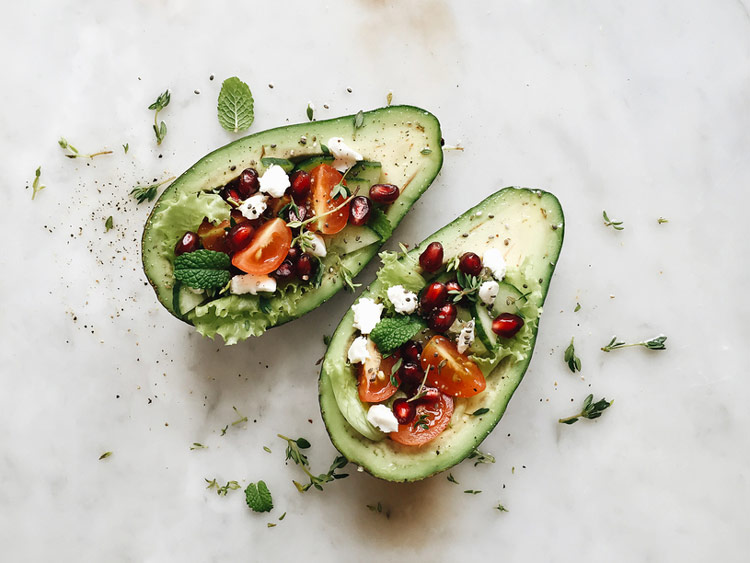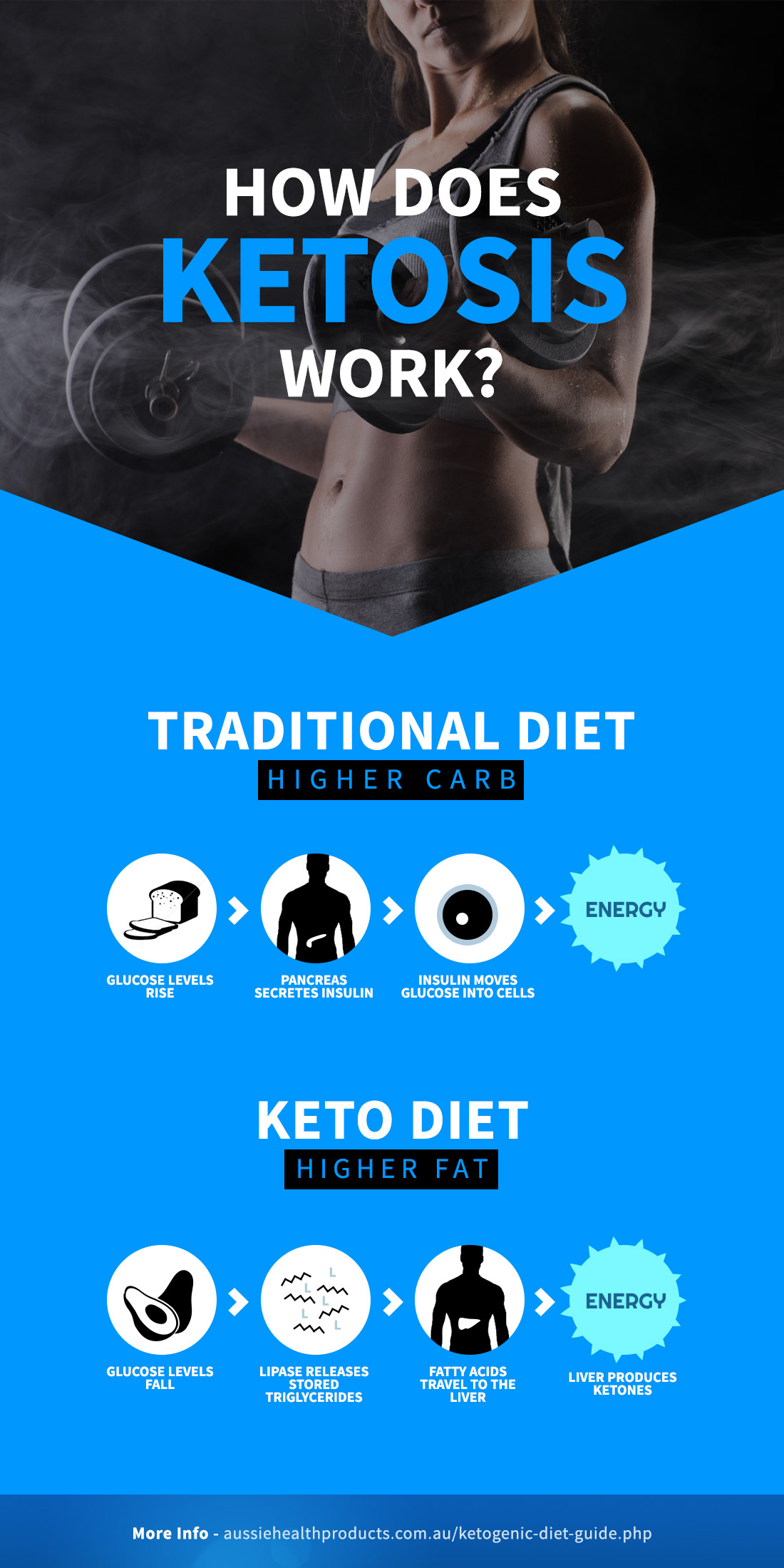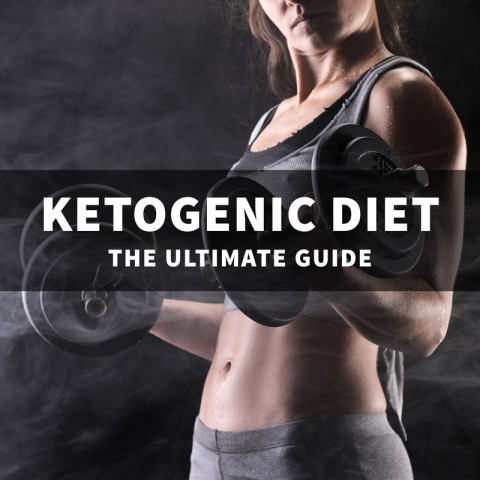In recent years, the ketogenic diet has received a lot of attention in various health circles for its alleged ability to burn fat, fight diabetes and cancer, and give us stable energy throughout the day. This isn’t your average diet though, and in fact directly contradicts what doctors have been advocating since at least the 1950’s.
What makes this diet so different? The goal of a ketogenic diet is to eat almost exclusively fatty foods, and avoid carbohydrates altogether. At first glance it seems unimaginable to consume foods high in fat after so many years of demonising fat in the media.
Upon closer look, however, we find a different story altogether…
The Ketogenic Diet Has People Rethinking Nutrition
In the scientific community, skepticism is encouraged. It allows people to constantly perfect and optimise the beliefs and understandings we have about things. Rethinking what constitutes a healthy diet is far from exempt of this.
The science of human nutrition is one that is constantly evolving. The way we breakdown and consume nutrients is incredibly complex, and every year ground-breaking new discoveries are made. It comes to no surprise then that the old high-carb, low fat diets have fallen under heavy scrutiny in recent years.
The fundamental principle of the ketogenic diet revolves around how we use energy in the body. Our bodies are wired to use either glucose metabolites, or fat metabolites (ketones). Depending on our normal diets, we can affect what source of energy our bodies come to rely on most.
The idea behind the ketogenic diet is basically to consume foods high in fat, consume very little carbohydrates, and our bodies will begin to prefer fats as a primary source of fuel. This allows us to avoid sugar spikes after a meal, and allows us to burn fat much more easily.
In terms of nutritional science this is a game changer. It rocks the entire nutritional boat to some degree, and gives argument to a longstanding understanding of nutrition.
But let’s get something straight, this diet, just like any other diet, isn’t the only answer. Some people will thrive on a diet like this while others will not. People tend to make hard stances when it comes to dieting, when it truly isn’t that simple (I certainly wish it was). It’s important to do your own research, and test different diets to find what works best for you. All you can do is look at the facts, and try things on your own to develop your own opinions.
With that said, let’s have a look at how the ketogenic diet works and why so many people are getting on board...

What are the benefits of the ketogenic diet
Ketones have a few benefits compared to glucose when it comes to powering our bodies:
- Energy levels are more stable during ketosis due to steady reserves of ketones in fat
- We can go long periods of time between meals without feeling irritable and uncomfortable
- Ketones do not spike insulin levels
- Ketones are a more efficient source of fuel than glucose
- We can consume less food on a ketogenic diet and remain feeling full
- Certain conditions, like diabetes, are less likely to develop when on a ketogenic diet
How Does The Ketogenic Diet Work?
On a traditional, high-carb diet, food enters our stomachs, and the carbohydrate chains are broken down into the smaller sugar molecules that make them up. This causes sugar levels to rise in the blood quickly. Our body doesn’t like to have sugar levels too high because in high concentrations, sugar is actually toxic to the body. In order to reduce sugar levels, and get it into the cells, our bodies release the hormone insulin.
Insulin is the hormone that allows sugar to enter the cells to be processed, and directly inhibits the breakdown of fat. Since presence of insulin directly inhibits fat loss high-carb diets can make it hard to burn fat.
After a high-carb meal our insulin levels spike sharply, forcing sugar into our cells. Once the sugar is absorbed, blood levels begin to rapidly drop once more. Since glucose is quickly burned to release its energy, our energy levels begin to drop within a few hours after a meal. This is what we call a “sugar crash”. Irritability, fatigue, and hunger are all side effects of this low sugar level between meals.
The ketogenic diet works by limiting the intake of carbohydrates, and replacing it with fat. Fat won’t cause insulin to spike, and over time causes the body to prefer fat as a source of energy. The benefit of this is that our energy levels between meals remains stable between meals, and the sugar/insulin spike and crash is avoided.
In the absence of insulin, the process of fat metabolism via both dietary and stored fat become much easier for the body. When combined with calorie restrictions and exercise, it become incredibly easy to burn fat as energy.
Most people living on a ketogenic diet report high levels of energy throughout the day. Concentration is improved, and athletic performance is enhanced, especially for long duration exercises like running, swimming, or cycling. They report improved weight loss (if combined with calorie restriction and exercise), and hunger-related irritability becomes a thing of the past.

If this all sounds confusing it’s because it is. Ketosis can be thought of simply like this:
Imagine sugar (glucose) is like rocket fuel. It burns very quickly and all together, producing a huge burst of energy. Once the fuel is burned up it must be replaced fairly quickly to maintain energy levels throughout the day. Without replacement the rocket will fall back towards the ground.
Fat on the other hand, is more like a lump of coal. The high density of energy, but slow release of that energy allows it to sustain energy levels for a much longer period of time before it needs to be topped up. The rocket doesn’t lift off with the same burst of power, but remains powering long enough to enter orbit...
This is exactly what the ketogenic diet aims to create in the body using our own fat stores...We call this process ketosis.

What Is Ketosis?
The whole aim of the ketogenic diet is to enter what we call “ketosis” (not to be confused with the diabetic condition “ketoacidosis” which is a medical emergency).
Ketosis is the process where the body is fuelled primarily off ketones (small, water soluble fat molecules), rather than glucose. It takes a while to enter ketosis, since our bodies normally are used to the quick rocket fuel source of energy we call sugar. In general, it takes about 2 weeks of a ketogenic diet to convince the body to enter ketosis.
In order to reach this point, a few things need to happen:
-
Glucose intake needs to be low
If glucose intake remains high, our bodies will continue to interpret this as a reliable source of energy and the transition to ketosis will be slow or completely absent. It’s important to consider the many forms sugar comes in (you might be surprised). - We must make it through an uncomfortable transition phase while the body changes hormonal and enzyme activity to promote this process
The reason for this is simple, when transitioning our body away from relying on sugar, there’s a period where our cells struggle to receive the energy they need. Our blood sugar will be low, and our body will be asking for more sugar in the form of food. This period of time can make us feel fatigued, and irritable. It only tends to last a few days, and for many doesn’t occur at all. If you feel overly fatigued or uncomfortable it is wise to dial back and transition more slowly.
Upon transition we often find significant boosts of energy and concentration… it’s well worth the wait. - We need to have available fat stores
With the ketogenic diet, we rely on having a store of fat to receive energy from. Even though we are consuming high fat meals to fuel our bodies, we need to have some fat on the body to act as a reservoir and buffer for the process. If we’re already too thin (BMI under 18), ketosis won’t be efficient and our bodies will turn to proteins as a source of fuel. This is far from the desired outcome because it means breaking down muscle tissues to liberate protein. The protein is then converted to glucose through a complex but inefficient process and used as glucose.
How Does Ketosis Help With Fat Loss?
It’s easy to lose fat in a state of ketosis for the same reason that it’s easy to build fat on ketosis. The sole determining factor for this is the amount of energy taken in versus the amount of energy burned.
If MORE energy is consumed than burned off, the body will ADD the remainder as fat.
If LESS food is consumed than burned off, the body will SUBTRACT the remainder from fat.
Due to the improved ability to liberate energy from fat during ketosis, it doesn't take much effort to convince the body to use the fat storage as a primary source of fuel. If dietary calories are lower, we simply take what we need from our fat directly.
Traditional systems retrieve energy from glucose, then glycogen, and finally fat. This usually means heavy, rigorous exercise is needed to reach this point and drain the sugar reserves.
The ketogenic diet offers an additional improvement towards weight loss that traditional high-carb diets lack.
Due to the lack of crashing between meals, the ketogenic diet helps to curb the appetite, and makes it much easier to consume fewer calories. One of the central components of a ketogenic diet is fasting, which by definition involves skipping meals.
The equation is simple:
(energy in) - (energy burned) = (energy stored as fat)
The average, 60 kg person will burn about 7000 kJ (1700 calories) in a day without doing anything. We call this the basal metabolic rate which you can calculate for yourself here.
If you consume 6200 kJ (easily equates to a full day's worth of meals) and burn about 7000 kJ just with regular activities, you have a net loss of around 800 kJ. That's equal to about 21 grams of fat!
Add some exercise to the mix, and you can see how easily it is to lose fat on a diet like this.
Take this ketogenic breakfast recipe for example. It uses 3 eggs, and 60g of butter to create a delicious, filling omelette for the morning. It contains about 1900 kJ (450 calories) worth of energy, leaving plenty of room for other meals throughout the day if desired.
The beauty of this lies in the fact that once in a state of ketosis, this meal has enough energy to last you through to dinner time without any cravings. A high carb meal of the same calories will last you only a few hours before hunger sets in again, prompting more intake throughout the day, and more calories consumed in overall...Remember what happens if you consume more calories than you burn?
Can Ketosis Be Used To Prevent Illness?
The benefits stretch further than weight loss and energy sustainability. The fundamental principles directly oppose the process of diabetes. Although it’s too soon to call it a “cure” for diabetes due to the lack of long term, randomised clinical trials on the subject, the concepts are fairly rigid and look promising.
Diabetes
Type II diabetes is caused by a resistance to insulin in the body, which makes it ineffective for forcing sugar into your cells. As a result, blood sugar begins to skyrocket, reaching dangerous levels. Sugar, when concentrated high enough, is toxic to the body. If sugar levels become high enough our vascular system can become damaged.
“Imagine insulin as the bouncer to a popular bar. As patrons line up, he unlocks the door with a large key and the line outside shrinks. If the bouncer lost his key, or it broke, he could no longer open the door and let the bar patrons in. They would build up in large numbers outside and eventually a riot would break start and cause damage the bar.”
The theories on what happens after this damage ocurrs are heavily debated, and definitely open for interpretations and conversation. The main theory is that cholesterol is used to repair this damage, which if allowed to continue (by maintaining high-sugar intakes), will result in cholesterol “plaques” forming. These plaques are the main contributor to conditions like angina, strokes, and heart attacks which is the leading cause of death in Australia.
Ketosis directly opposes this process because with low sugar intake, and the promotion of an alternative fuel source for the body that is unreliant on insulin (ketone bodies), we can sidestep the entire process involved with type II diabetes (in theory).
Cancer
Many spokespeople for the ketogenic diet report its ability to fight cancer. These again are based on strong deductive reasoning, from animal or in vitro testing, and not on large randomised clinical trials. This doesn’t make the idea untrue, but prevents us from honestly claiming that the ketogenic diet can “cure” cancer. Furthermore, there are people on the other side of the fence suggesting the ketogenic diet actually speeds cancer growth… This leaves us in utter confusion… do high-carb diets or high-fat diets promote cancer? The answer is “it depends”. It’s never that simple and it all depends on the type of cancer present.
The main argument to support ketosis for fighting cancer involves how much oxygen is available to the cancer cell. Cancer is made up of cells just like the rest of our body, the difference is that the DNA of these cells are damaged, and it no longer functions the way it was intended to. The damage however, is not enough to cause the cancer cell to die, rather, it multiplies into more dysfunctional cells which eventually build up enough to cause the entire organ they are living on to fail. This is how cancer kills.
As these cells grow and divide, they require energy just like every other cell in the body, the difference, is that many forms of cancer don’t have great access to circulating oxygen, they are required to build their own vascular system in order to tap into the blood and oxygen supply. This however takes time.
Instead, they produce their energy in anaerobic conditions (no oxygen), which ketones won’t support. Therefore some types of cancer cells have a much higher affinity for sugar as a form of energy than fat because sugar can be burned without the presence of oxygen.
This is an oversimplified description of a very complex process, but does lend some interesting areas to research with regards to how we may be able to use the ketogenic to our advantage in fighting or preventing cancer.
What Would A Ketogenic Meal Look Like?
Different sources will suggest different ratios, but the general aim is to receive 70% of your energy intake from fats, 20% from protein, and the rest (10%) from carbohydrates. Since fat has such a higher density of energy, this isn’t a hard task to accomplish.
For every gram of carbohydrates you receive 17 kJ of energy. Conversely, for every gram of fat you receive a whopping 37 kJ of energy! That means you need to eat less than half the amount of a high fat meal than you would with carbohydrates.
To put this in perspective, let’s compare some foods:
- 15 ml of olive oil that you might drizzle on a salad, delivers the same amount of calories as 2 pieces of whole meal bread.
- 100g of mozzarella cheese is roughly double the calories contained in about a cups worth of pasta.
- A small glass of whole milk is equal to about 1 large potato (potatoes are nearly pure sugar in the form of starch).
Overall, a ketogenic meal has a few main characteristics:
1. Smaller Meals
Because of this increased density of energy, ketogenic meals are often smaller in size than their high carb counterparts. Things like cheese, milk, butter, cold-pressed healthy oils, and of course, vegetables are consumed on a regular basis.
2. Low-Carb Foods
You may be surprised at what foods are not recommended on a ketogenic diet, because carbs can come in so many different forms. Beets, potatoes, and carrots for example are all foods that should be avoided on a ketogenic diet. Most root vegetables are designed to be a place of storage for the plants sugar during the winter months, and therefore are bad options for those avoiding sugars. View a list of Keto Friendly Snacks.
Of course breads, pastas (apart from low carb pastas), lollies, most fruits, and processed foods are also off limits for their high sugar content.
3. High Fat Foods
What is on the menu, however, tends to be things like eggs, peanut butter, leafy greens, salads, avocados, cheese, meat, seafood, and the aboveground portions of vegetables. All of these foods are high in fats, fiber, proteins, vitamins and minerals, and fairly low portions of sugars.
4. Vitamin Rich Foods
Like any diet, it’s crucial that you receive enough of your daily vitamins and minerals. Rich, green vegetables remain among the best options for this. The ketogenic diet doesn’t fundamentally prefer plant based foods over animal, but it’s hard to argue that plants don’t offer a more rounded source of these vitamins and minerals. It’s recommended that the majority of the plate is covered in vegetables for a healthy meal, but they should be combined with rich sources of fats. Olive oil, coconut oil, cheese, avocado, and seeds are perfect additions.
Looking for Ketogenic Recipes?
A Final Note…
Can Vegans or Vegetarians Live A Ketogenic Lifestyle?
The short answer is yes, but it can be a challenge for many. Livestock, animal byproducts, and fish are among the richest sources of fats available. This is because animals tend to rely on fat as a fuel source over sugar (for the very same reason we humans want to reach a state of ketosis).
That said, there are plenty of vegetarians or vegans living the ketosis lifestyle. Foods like coconut oil, avocado, nuts, chia, and olive oils are great sources of fat that can be added to any meal. Just remember to stay away from the starchy root vegetables like potato, carrots, and beets.
In the early days of combining a vegan philosophy with a high fat diet, it’s recommended that you spend some time doing research on what foods you have at your disposal and how you can combine them to best reach your daily energy requirements. It’s also a good idea, at least in the early days of the transition to consume a multivitamin regularly. The main reason for embarking on a ketogenic lifestyle is to promote health and energy, vitamin deficiencies don’t play well on either and are easily prevented with a multivitamin until you get the swing of things.
Want to learn more?
Read our article on Useful Tips for embarking on your Ketogenic Diet Journey.
References:
- D. P Arcari, W. Bartchewsky, T. W. dos Santos, K. A. Oliveira, A. Funck, J. Pedrazzoli, M. F. F. de Souza, M. J. Saad, D. H. M. Bastos, A. Gambero, P. de O. Carvalho, and M. L. Ribeiro. (2009). Antiobesity Effects, of yerba mate Extract, (Illex paraguariensis) in High-fat Diet-induced Obese Mice. Obesity. 17. 2127-2133.
- Whitney, E. N., & Rolfes, S. R. (2002). Understanding nutrition. Belmont, CA: Wadsworth.

Love Health?
From recipes, trends and discounts, expect great things via email this month.
More Great Reads!

Behind The Brand: Antipodes

How to Regrow Food from Scraps
Recipes We Love!

Clever Cookies











